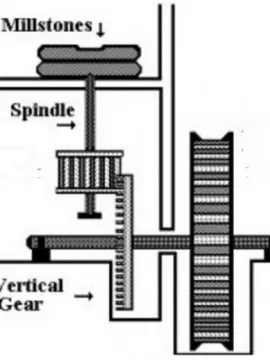Peckforton Mill Part 2
The following research does not include any reference to the Tollemache estate papers held at Chester Record. Rather it is the result of map interpretation and fieldwork.
This inscription on the left wall of the mill, after a consensus of views, is for 1698. No mill or miller is recorded in the 1857 Post Office Directory. Spurstow and Beeston had one but not in 1875. All other Gowy mills are mentioned, in Kelly's, from 1857 onwards. In 1890, the Peckforton Estate bought Bunbury Mill. This date and others offer clues to the demise of Peckforton Mill and will be considered in Part 3.
The mill is contemporary to the earliest dwellings in the village. A small mill driven by a mill-pool would have been familiar on the Gowy in the 17th century. It was built of local sandstone (and brick) by an estate worker or even a mason.
The site of the mill is rather odd. It sits in a hollow with a level field behind and slopes away ahead of it; the mill-pool has gone. No appreciable break in the gradient exists to power water to the mill. Either the Gowy was more powerful or the mill-pool was deep enough to provide a strong head of water. With such a small population it may have been producing animal feed rather than bread.
Mill backwall showing two small floor joint holes
When the mill ceased the mill-pool gradually became a marsh and a refuse dump then infilled. A good deal of the sandstone blocks has been removed from the mill. What remains suggests the mill stood some 7m high and 6m wide with curving embanking stone walls on either side adding a further 6m. Behind the mill a 3m wide sandstone dam wall separated a large mill-pool and gave access to the upper floor of the mill. The mill may have looked like this:
Most of the building used large dressed sandstone blocks though not of the best quality. The roof may have sloped more acutely than illustrated; rather like a lean-to.
Two half-buried millstones were a surprising find. These are possibly of coarse rock such as Millstone Grit. Without expert opinion the best guess is they originated in the Peak District.
The stones are over a metre across, 14 cm thick with a large centre hole and extremely heavy, and would sit on the upper floor of the mill.
During the medieval period France provided the best stones for milling grain. These 'burr' stones measured up to 2m in diameter, weighed close to a tonne and only the manorial lord could afford them. Millstones of the 19th century, however, were both less costly and smaller like those at Peckforton when Lord Crewe owned it in 1846.
Whether a windmill was still functioning at this time is unlikely as the one at Spurstow (see plots:293 and 411 Tithe map) had gone. The two parishes had both types of mill and it is possible the milling at the watermills took over as the windmills ceased. It is thought 'auxiliary' windmills supported watermills at times of low summer water levels or if the river froze in winter as happen at various mills on the Gowy.
In Part 3: The changing Gowy through map interpretation and fieldwork
Quick Links
Get In Touch
TarvinOnline is powered by our active community.
Please send us your news and views.







